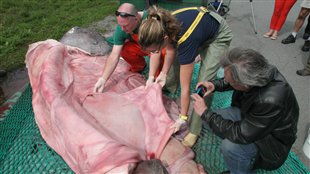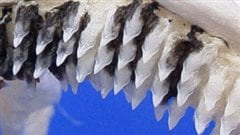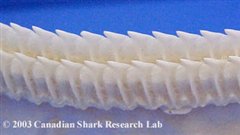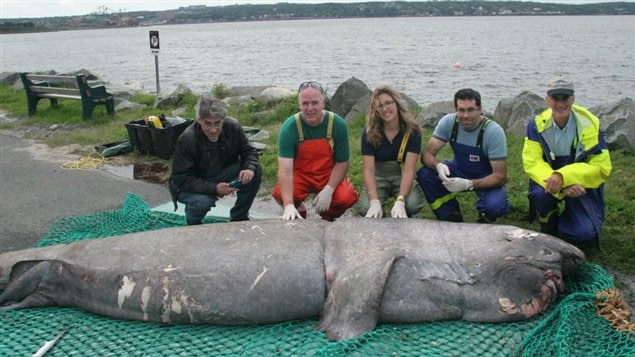Sharks are mysterious creatures to most of us, but one of the most mysterious not only to us, but to scientists as well, is the Greenland Shark.
Recently a large specimen was caught in the Atlantic Ocean by fishermen near Sable Island, off the Nova Scotia coast. It was brought to the Bedford Institute of Oceanography In Dartmouth to be examined and hopefully give researchers more information about this little known species.
Dr Steve Campana is a renowned marine biologist and head of the Canadian Shark Research Laboratory at the Institute, located at Dartmouth, Nova Scotia
Listen
It is one of the largest predators on earth.
Although it’s called the Greenland shark, it could very easily be named Canadian shark, as it is very much a creature of Canada’s Atlantic and Arctic coastal areas. .
Indeed, one of the little known facts about the Greenland shark is that it likes cold water,
It can also descend to incredible depths of at least one and half kilometres down, and very possibly deeper. It’s suspected that tracking devices were simply crushed by the pressure as the tagged sharks descended below that depth.
And one other known fact, and unlike other sharks, its meat is toxic.
It is also rumoured to live as long as 500 years. However, because it is unlike other sharks in many ways, that too remains among the many unknowns of this creature. A typical method of measurement of the age of sharks is by counting growth rings on a vertebra, but in these sharks, the vertebrae are so soft you can push your finger through them and there are no growth marks evident.

It is also not known about where they give birth, nor how many it young they produces, nor do have even a rough estimate of how many there are.
Dr Campana was excited to be able to examine this large female specimen. He was hoping to find out more about gestation and birth in this species, and while there were no embryos, he was able to find that it had given birth recently.

This adds at least a little more information as to when these sharks give birth, which is at a different time of year from several other of the 19 species of sharks in Canadian waters.
Dr Campana says they are working on developing a new technology to determine the age of these sharks and they’ll be working on that in coming weeks.
CANADIAN SHARK RESEARCH LABORATORY







For reasons beyond our control, and for an undetermined period of time, our comment section is now closed. However, our social networks remain open to your contributions.